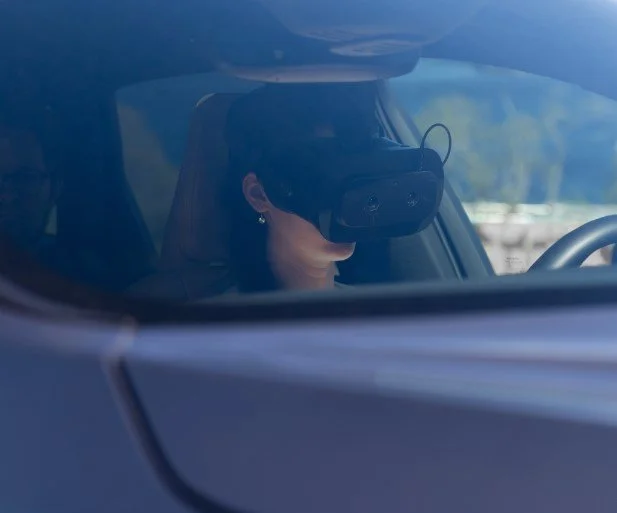Volvo and Varjo Go Virtual Together
This is an exciting new digital age where technology is becoming more advanced than it’s ever been. In recent years, it has become increasingly vital to adapt to these new technologies and implement them into digital strategies. Virtual reality (VR) is just one of these newer technologies that took the world by storm a few years ago when Facebook joined forces with Oculus, rebranded (now known as Meta Platforms), and created the “Metaverse” in 2022. Meta Quest 3 VR Headset (Quest 1 and 2 were released by Oculus before the rebrand) hit shelves a few months again near the end of 2023. They completely changed and revolutionized VR and are continuing to grow the technology with every release. Smartphone powerhouse, Apple, got into the VR market as well by debuting “Apple Vision Pro” in the beginning of February of this year.
The main purpose of VR is to create a simulated, digital experience that can either be extremely like the real world or completely different from it. It aims to create an immersive and interactive environment for users to enjoy, while also making the feel as if the digital environment surrounding them were real (Interactive Design Foundation). Virtual reality is only continuing to grow and creating these deep immersive experiences in terms of branding and strategies can be game changing. Let’s dive into how Volvo decided to incorporate virtual reality into their own personal product development strategy and managed to create something completely unique with Varjo that takes a spinoff of VR headsets.
Since 2018, Volvo Cars as been working with Varjo’s mixed reality prototypes to add photorealistic virtual elements that transform the interior of a user’s car (Case Volvo Cars…2022). They keep aspects like the real road, nature, road signs all realistic as it’s a necessity to drive, but then add elements in their different cars to make it appear as they interior of the car has changed. This advanced technology uses rapid eye tracking to allow for retina-perfect renderings of designs and 3D models (Stein, 2019) . The main reason for creating this one-of-a-kind device is to test UX designs and concepts quickly in real life scenarios. Volvo explains how it helps perform design studies of their future cars too before even building them and helps them accomplish things in a single day, that would normally take weeks. From a branding standpoint, Volvo explains that eye tracking adds a huge layer of capability and trustworthiness. They basically have on the eyes of their consumer with this device and are viewing it as a customer would, so there is a much better view in terms of perspective from the design side (Case Volvo Cars… 2022). This technology has completely changed VR and is the world’s first mixed reality test drive aim is to revolutionize how we test cars.
Below is a sneak peek into the immersive experience to give a better glimpse at what advanced technologies they use to create an immersive experience for consumers.
Using this kind of technology for development of their cars helps brand them as cutting-edge in the field and helps to pave the way for the big impact VR can have in the future for not only just the automotive industry, but many others as well.
Resources:
Case Volvo Cars: The World’s First Mixed Reality Test rive. Varjo.com. (2022, November 15). https://varjo.com/testimonial/xr-test-drive-with-volvo/
Interaction Design Foundation - IxDF. “What is Virtual Reality?” Interaction Design Foundation - IxDF. 6 Apr. 2024 https://www.interaction-design.org/literature/topics/virtual-reality
Stein, S. (2019, May 19). Varjo XR-1 is an AR headset so fast, Volvo test drives cars while wearing it. CNET. https://www.cnet.com/tech/mobile/varjo-xr-1-is-an-ar-headset-so-fast-volvo-test-drives-cars-while-wearing-it/


